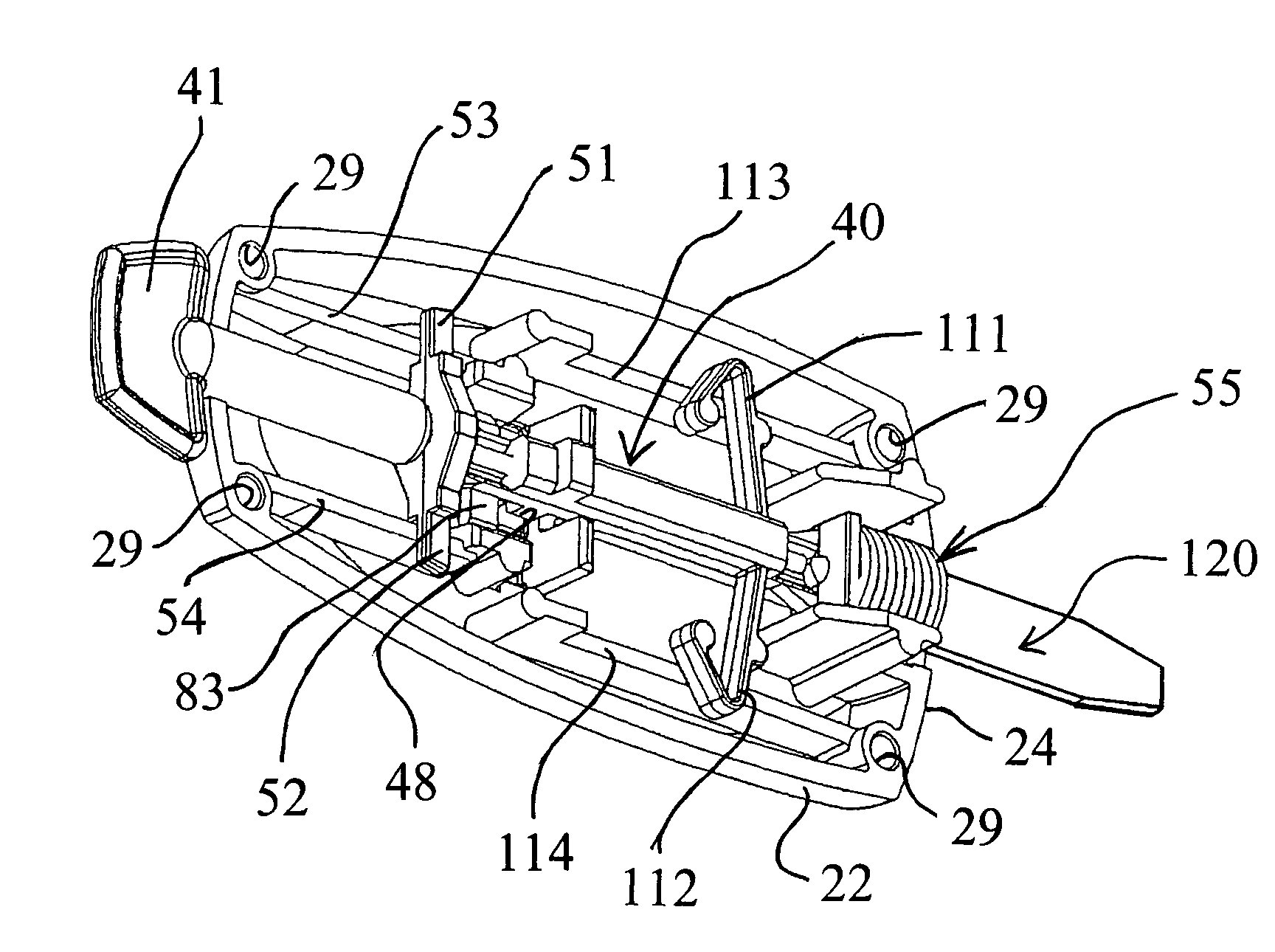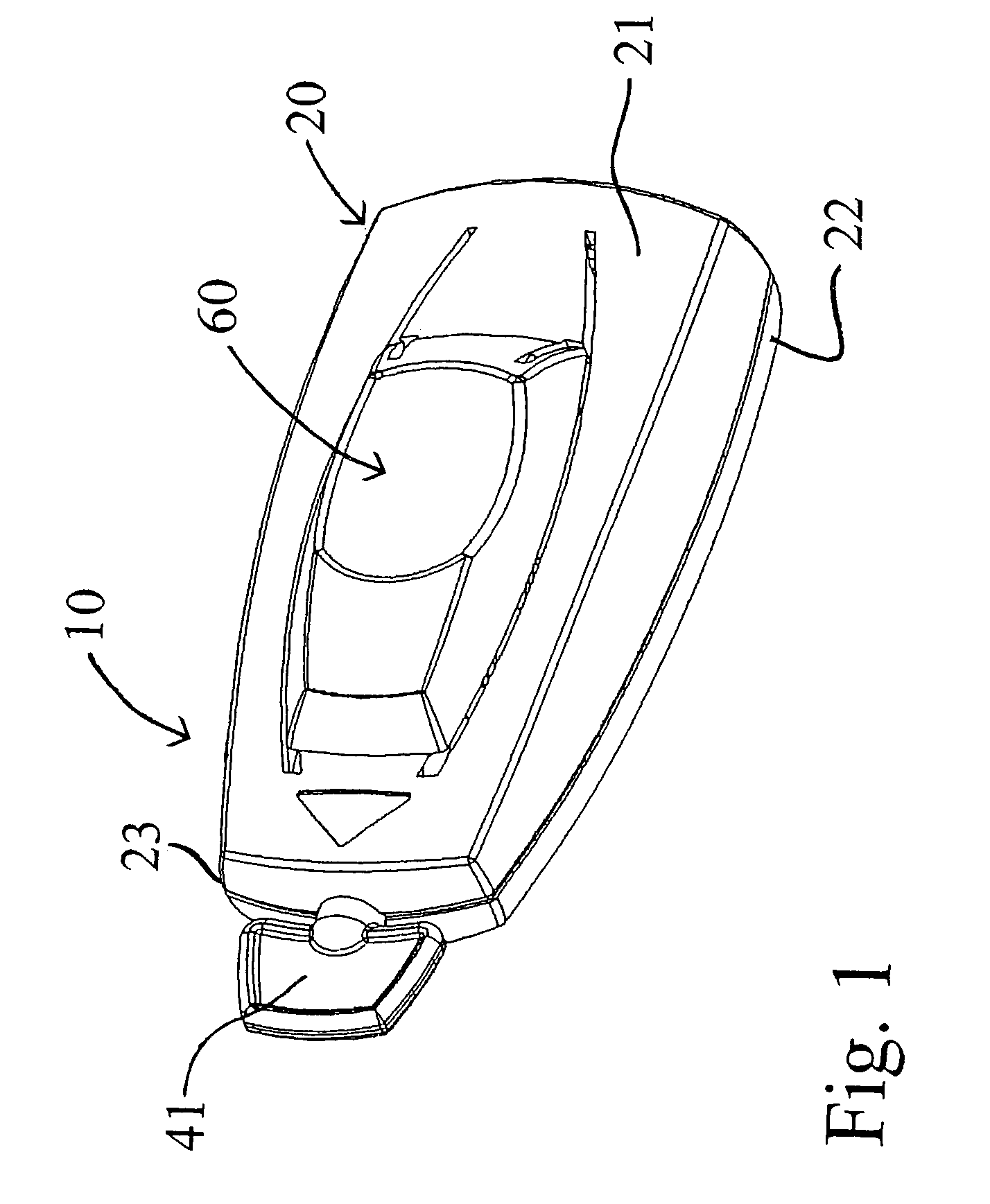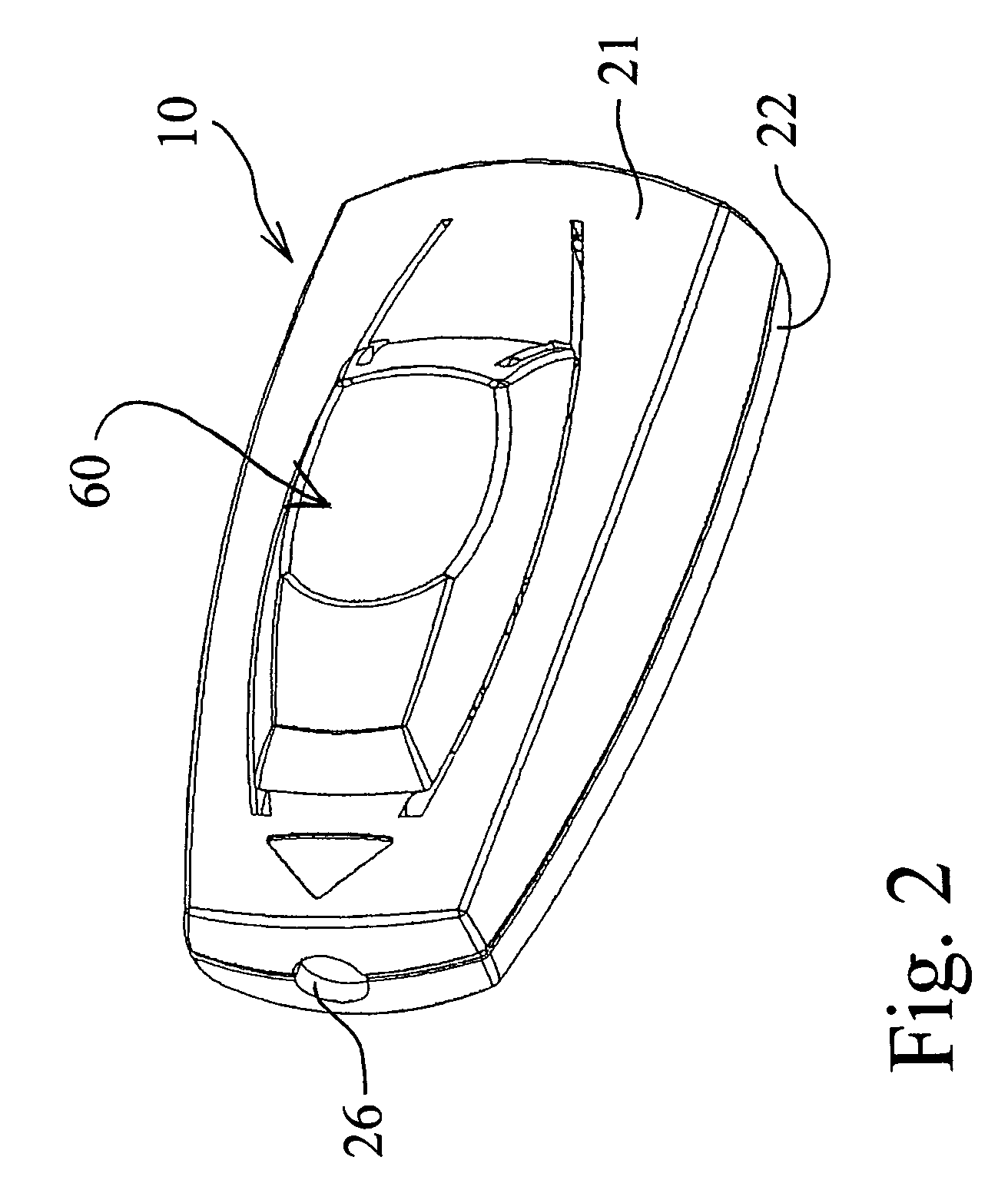Single-use lancet device
a single-use, lancet technology, applied in the field of single-use lancets, can solve the problems of reducing unable to properly retract the lancet after firing, and unable to meet the needs of use, so as to achieve the highest quality finished product and reduce the cost of the device
- Summary
- Abstract
- Description
- Claims
- Application Information
AI Technical Summary
Benefits of technology
Problems solved by technology
Method used
Image
Examples
Embodiment Construction
[0046]FIGS. 1-5 are perspective views of the preferred embodiment of the present invention. FIG. 1 illustrates the lancet device shown generally as 10 in its cocked position in which it is stored until ready for use. The body 20 of the device includes upper body portion 21 and lower body portion 22. Upper and lower body portions 21 and 22 may either be hingedly connected or may be separately formed and placed together in the position shown in FIG. 1 during the assembly process. A trigger shown generally as 60 in FIG. 1 is carried by upper body portion 21. Trigger 60 is shown in its first raised position in which the device is cocked. A plastic twist off safety cap 41 is shown extending outwardly from the distal end 23 of body 20. Cap 41 is integrally molded with the needle carrier assembly 40.
[0047]FIG. 2 illustrates the lancet device 10 after the safety cap 41 has been removed and the needle tip 45 (see FIG. 13) is exposed internally of the device and the device is ready to be fire...
PUM
 Login to View More
Login to View More Abstract
Description
Claims
Application Information
 Login to View More
Login to View More - R&D
- Intellectual Property
- Life Sciences
- Materials
- Tech Scout
- Unparalleled Data Quality
- Higher Quality Content
- 60% Fewer Hallucinations
Browse by: Latest US Patents, China's latest patents, Technical Efficacy Thesaurus, Application Domain, Technology Topic, Popular Technical Reports.
© 2025 PatSnap. All rights reserved.Legal|Privacy policy|Modern Slavery Act Transparency Statement|Sitemap|About US| Contact US: help@patsnap.com



